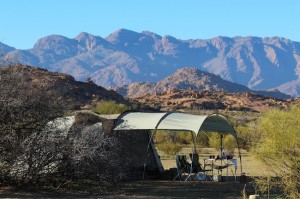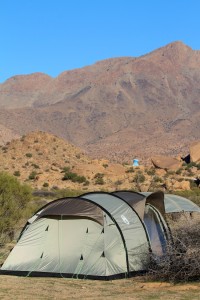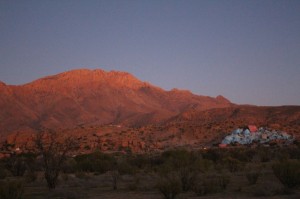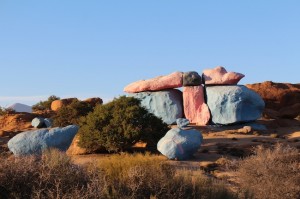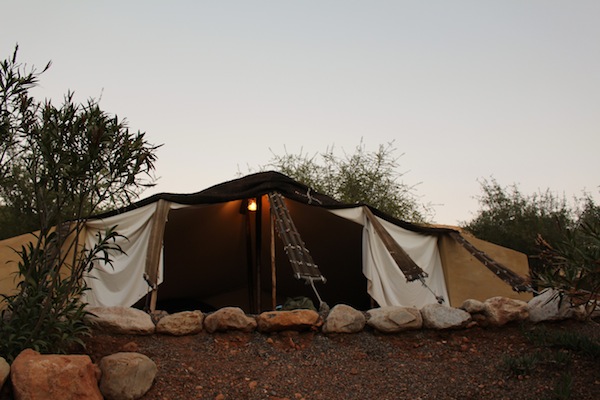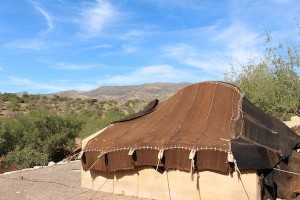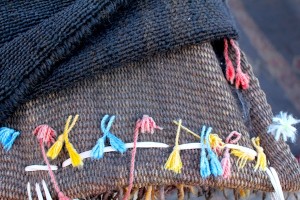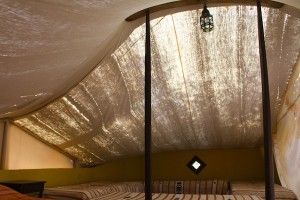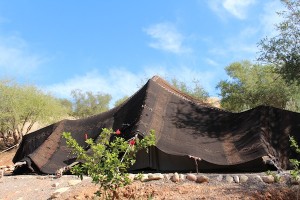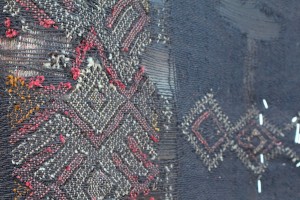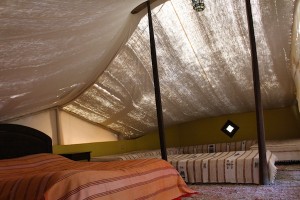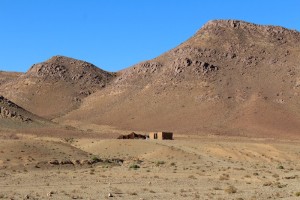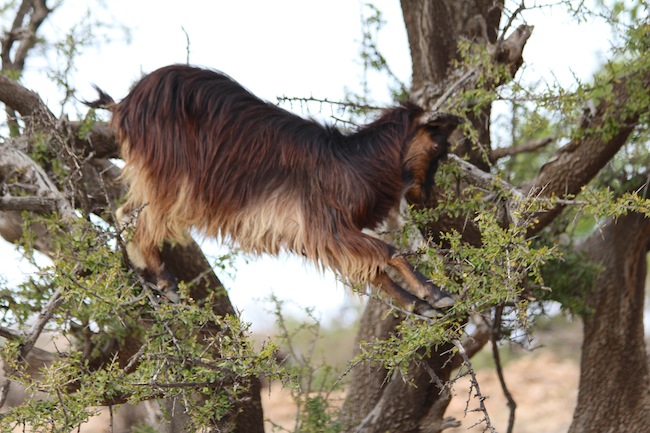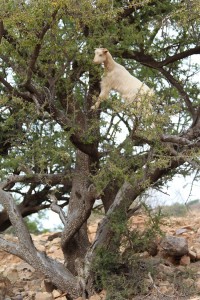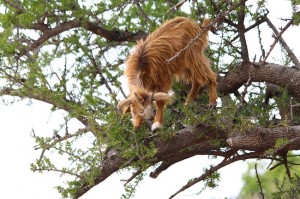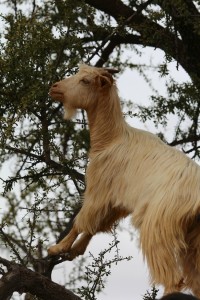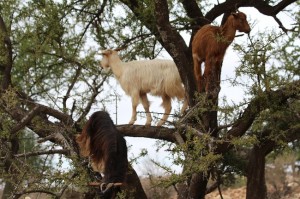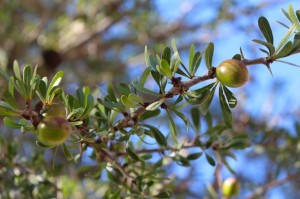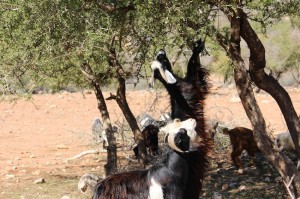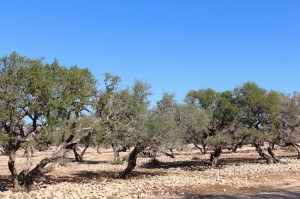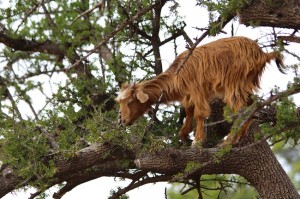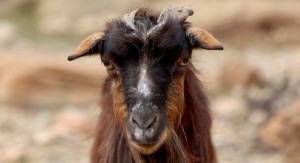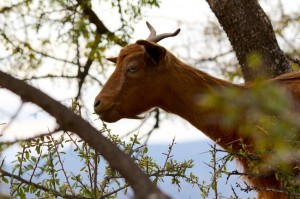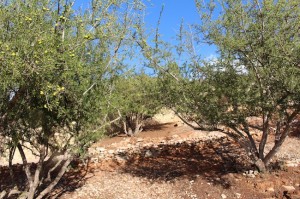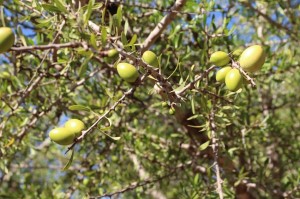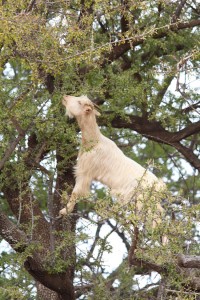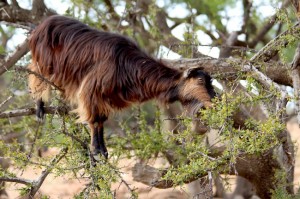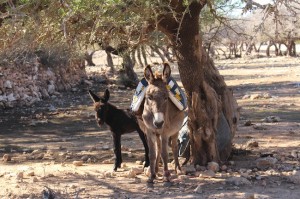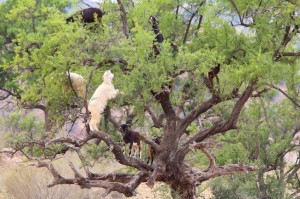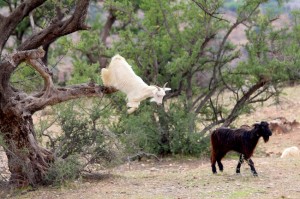Our journey south brought us to Agadir and a few days rest in a Berber tent at the Paradis Nomade campsite, a few kilometers north- east of the city.
Everyone seems to like this particular watering hole,
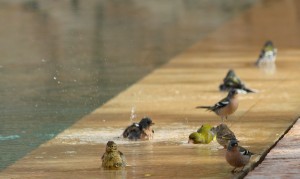
Birds on the edge of the swimming pool at Paradis Nomade
and even the heavens were smiling down on us.
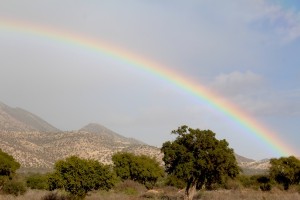
Rainbow over the Atlas mountains
We took time to unload Charlie and then go exploring. Paradise Valley was strongly recommended by our friends Szabina Mozes and Rino Koop so of course we had to go.
Turning inland about 20kms north of Agadir, you take the road up to Imouzzer, through the Anti Atlas mountains, high canyons, river flats and palm trees.
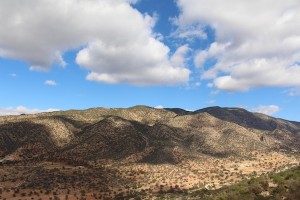
The hills and valley above Agadir, doted with Argan trees
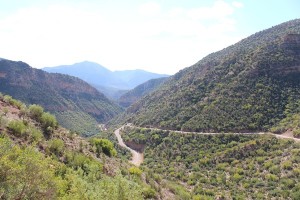
Switchbacks along Paradise Valley
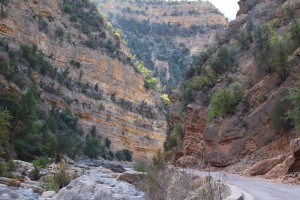
The deep canyon road twists and turns
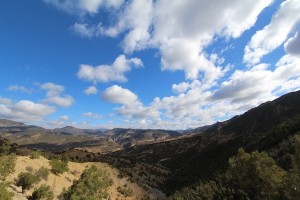
The scale is huge
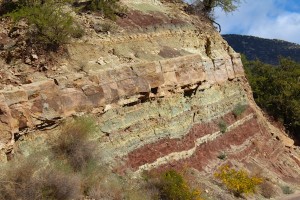
The rocks are different colours at every turn and across the millennia
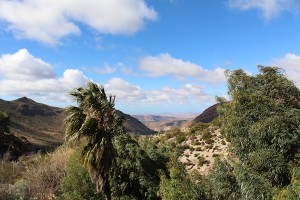
Looking back from the head of the valley at Imouzzer
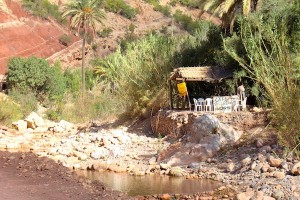
Doing business Paradise Valley style
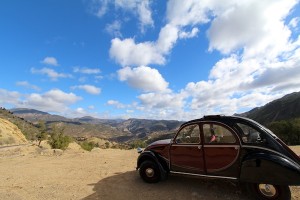
Charlie Charleston has been breaking altitude records daily!
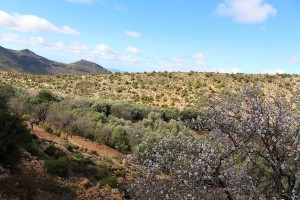
Almond blossom and lavender make delicious honey in this region
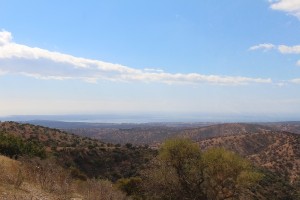
Agadir in the far distance
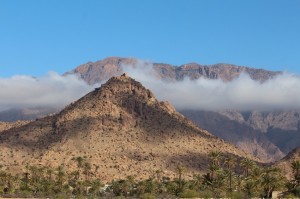
Higher than the clouds in the Anti Atlas mountains
Back down the to coast and more of the increasingly common Moroccan driving experiences
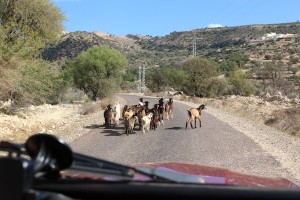
If they aren’t up trees, they’re on the road!
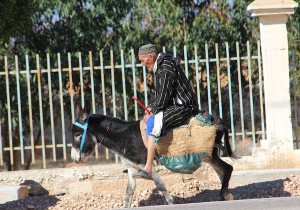
The rider looks to be working harder than the donkey!
Although we had been warned that driving in Morocco is a hair-raising venture, we haven’t found it to be so … yet!
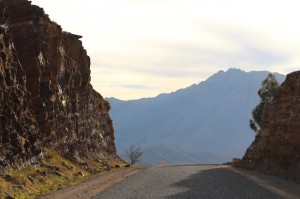
Warning!
The roads can be narrow, uneven and potholed in places, the traffic (human and animal) can be challenging and reluctant to give ground, but it is far from the motoring terror that we had been anticipating… watch this space and of course we concede the bit about getting stuck in the sand!
South of the dunes that sucked Charlie into their grasp is the seaside town of Tifnit, and it is about as seaside as you can get.
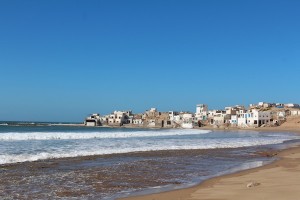
Tifnit is perched on a crumbling spit of sand jutting into the ocean

From a distance Tifnit looks idyllic, but it is slowly sinking into the sea
Walking through the village means walking through a sand dune
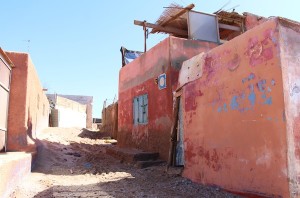
The village is losing its battle with the sand
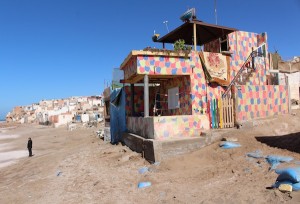
They put a colourful face on it!
Even the boats are landlocked now
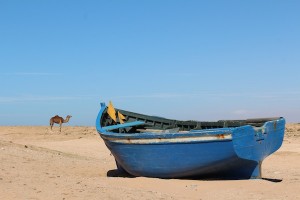
A ship of the desert and a beached boat at Tifnit
Agadir itself is a very modern affair – built almost entirely from scratch after an earthquake destroyed the original city in 1960. The new town has wide boulevards and a retro vibe from its 60s re-birth, but its still the same Morocco underneath.
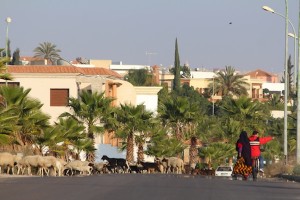
The main road into Agadir – still full of sheep

Everyone loves Charlie Charleston
It is a cosmopolitan place, where Saturday night promenading takes place under the dramatically illuminated hillside declaration “God, Country, King”
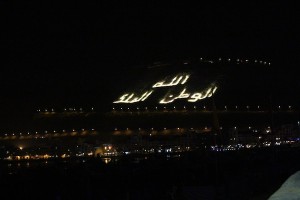
God, Country, King – inscribed on the hillside in Agadir
Come days end the beach is only good for one thing in Morocco – football is not a national sport it is a national obsession! Even high in the rocky mountains space will be cleared for a pitch!

Moroccans LOVE football!
But the countryside and magnificent long views are never far away
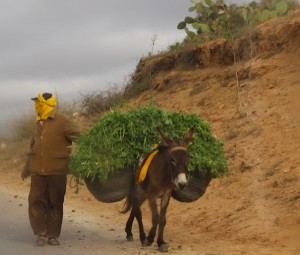
- Carrying herbs to market
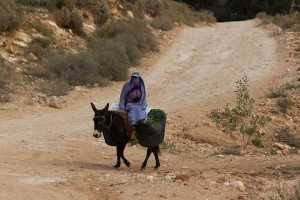
- Working hard
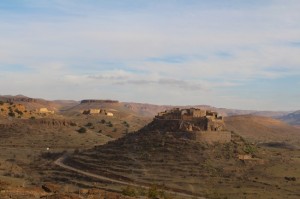
- Kasbahs dot the hillsides
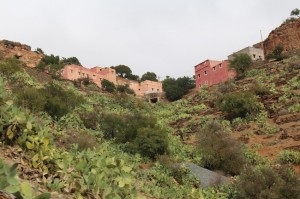
- More modern Moroccan hillside homes and succulent cacti

- Just one of the long and winding roads
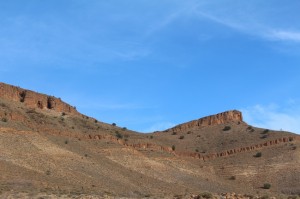
- The road less travelled!
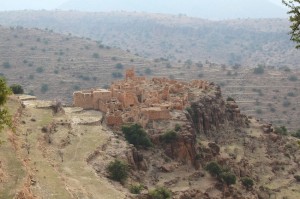
- People still live here!
As you can imagine, every turn is a delight or fascination for the eye and the camera. If you want to see more of anything in particular, post a comment and we will be happy to oblige.
Our travels are now taking us inland from Agadir, further south and to the desert, there is plenty more to come!


